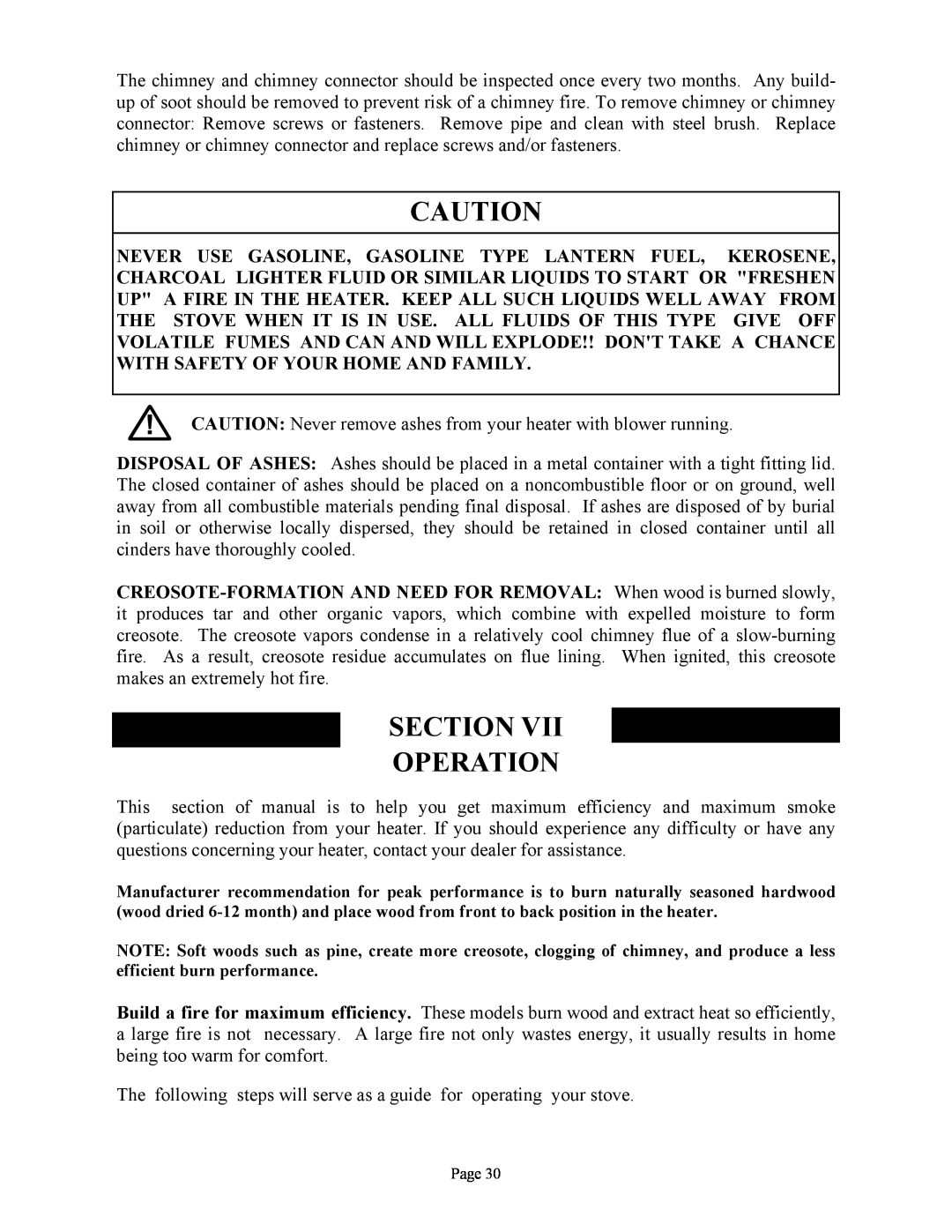
The chimney and chimney connector should be inspected once every two months. Any build- up of soot should be removed to prevent risk of a chimney fire. To remove chimney or chimney connector: Remove screws or fasteners. Remove pipe and clean with steel brush. Replace chimney or chimney connector and replace screws and/or fasteners.
CAUTION: Never remove ashes from your heater with blower running.
DISPOSAL OF ASHES: Ashes should be placed in a metal container with a tight fitting lid. The closed container of ashes should be placed on a noncombustible floor or on ground, well away from all combustible materials pending final disposal. If ashes are disposed of by burial in soil or otherwise locally dispersed, they should be retained in closed container until all cinders have thoroughly cooled.
SECTION VII
OPERATION
This section of manual is to help you get maximum efficiency and maximum smoke (particulate) reduction from your heater. If you should experience any difficulty or have any questions concerning your heater, contact your dealer for assistance.
Manufacturer recommendation for peak performance is to burn naturally seasoned hardwood (wood dried
NOTE: Soft woods such as pine, create more creosote, clogging of chimney, and produce a less efficient burn performance.
Build a fire for maximum efficiency. These models burn wood and extract heat so efficiently, a large fire is not necessary. A large fire not only wastes energy, it usually results in home being too warm for comfort.
The following steps will serve as a guide for operating your stove.
Page 30
